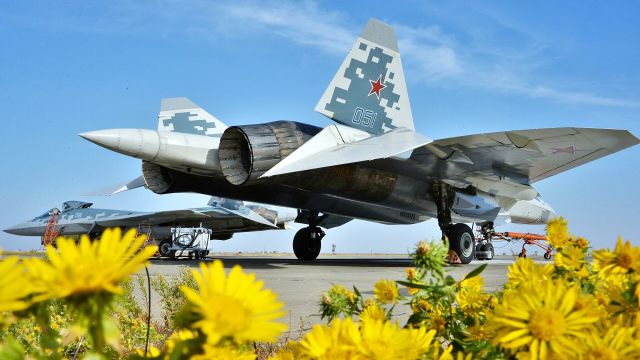MOSCOW, July 28-RIA Novosti. The pilot of the Russian fighter of the 5th generation Su-57 will be able to control the aircraft with eye movements in the future, Nikita Dorofeev, head of the cabin department of the Sukhoi Design Bureau, told the Arsenal of the Fatherland magazine.
According to him, one of the promising areas of development of the system, with the help of which the pilot will interact with his fighter of the 5th generation, is the view control.
At the same time, the specialist noted that while the system works well on the stand on the ground, "everything is much more complicated in flight."
Another option for the development of the Su-57 interface is voice control. "Now the task is being solved to teach the system to understand not memorized phrases, but the context, so that the pilot does not need to remember exactly what phrase he should say in extreme conditions," Dorofeev said.
The head of the cabin department gave two more options for the interface of combat aircraft-touch screens that will allow you to create a multi-layer display, make it interactive and more informative, as well as augmented reality.
"Augmented reality," Dorofeev explained, " is, for example, when, in conditions of poor visibility, the terrain, the strip, and other ground objects are drawn on the same indicators (in the cockpit of a fighter) or on the helmet-mounted target designation and indication system. There are already similar systems on civilian aircraft."
He added that this may be necessary to represent the target situation or in conditions of poor visibility.
The augmented reality system, Dorofeev added, will be combined with a system of technical vision - optical cameras, including in the infrared range, located in various parts of the aircraft. For example, in conditions of haze over the terrain, cameras in the infrared range will provide the pilot with better visibility.
The Su-57 is a fifth-generation Russian multifunctional fighter developed by Sukhoi. The machine is designed to destroy all types of air, ground and surface targets. It has a supersonic cruising speed, internal fuselage armament, radio-absorbing coating, as well as the latest complex of onboard equipment.
By the end of 2024, the Russian Aerospace Forces should receive 22 Su-57s, and by 2028 their number in the Russian Armed Forces will be brought to 76. The first serial Su-57 was transferred to the Russian troops at the end of last year.

